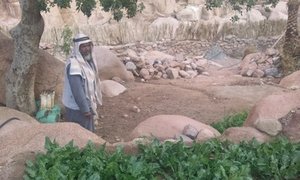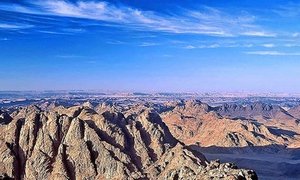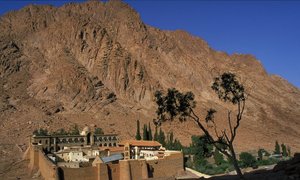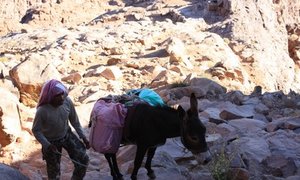"To see and to be silent in nature is needed to get in touch with our soul."
St.Katherine Protectorate was established in 1988 (with EU support) in the Sinai High Mountains and covers nowadays more than 5750 km². It has a great biological diversity. It is home to ⅔ (40 species) of all butterflies in Egypt and is known for its many different types of (medicinal) plants: 1262 of which 520 species are native to Egypt and 36 only grow here and many of these native plants are now endangered.
The ancient and unique knowledge of the Hakims (Bedouin healers) can now, thanks to a local project, be transferred to new generations.
Local Bedouin run a selfsustaining project in producing local herbs.
In this area you can find animals like the Nubian ibex, rock hyrax, red fox, spiny mouse, Sinai agama lizard, hyena, wolf and more.
This vast landscape is formed about 600 million years ago and this makes the Sinai Mountains one of the oldest massifs in the world. Apart from the red granite rocks that occupy 80% of the Sinai Mountains, there are also newer (10 million years old) black volcanic rock formations.
The South Sinai massif is a part of the Arabian-Nubian massif.
It consists mainly of chilled magma which welled up and formed plutonic granite, volcanic rock and numerous stripes of volcanic rock intrusions.
The local Bedouin call these rock veins Jidda (nurturer, nourisher, grandmother - it probably derives of the formal Arabic word 'Gaedda', which is a rock vein).
These jidda’s can be found in different sizes and can strech out for kilometres. They are more permeable to water than the harder granite so plant can grow here more easily and animals gather here to shelter and feed themselves.
The labyrinth of interconnected valleys (wadis) was created by rainfall and melting snow resulting in huge rocks sown down by the tremendous force of the water.
The Sinai desert normally has very low annual rainfall but in winter there can be a deluge of Biblical proportions coming from the mountains. These floods rumble rumble down, channel, shape and green the Sinai desert in its wake.
When you're in the mountains (away from photographers, tourists and pilgrims) you really understand the beauty of this area.
In spring the wadi's are filled with fragrant herbs and plants that grow nowhere else and they fill the fresh mountain air. This botanical diversity is due to the location of the Sinai (between Africa, the Middle East and Europe) and the amount of rainfall. In winter, the peaks are covered with snow and melt water remains underground during the long dry periods in spring, summer and autumn. Here you will find the highest mountain of Egypt (Mount Sinai also known as Mount Moses, Gebel Katherine, Gebel Moussa) but there are many other high peaks above 2000 meter altitude nearby.
The region is a UNESCO World Heritage area and is important to Judaism, Christianity and Islam for its cultural inheritance.
The oldest continuously occupied monastery in the world, the Monastery of Saint Katherine, is here.
This is the place to visit to see wildlife, ancient sites and to learn about the local Bedouins who follow their traditional lifestyle and live in this fragile eco system.
The St.Katherine protectorate intends to maintain the natural and cultural features of this region and is a major job provider in the area.







